
Szerző: BD
-
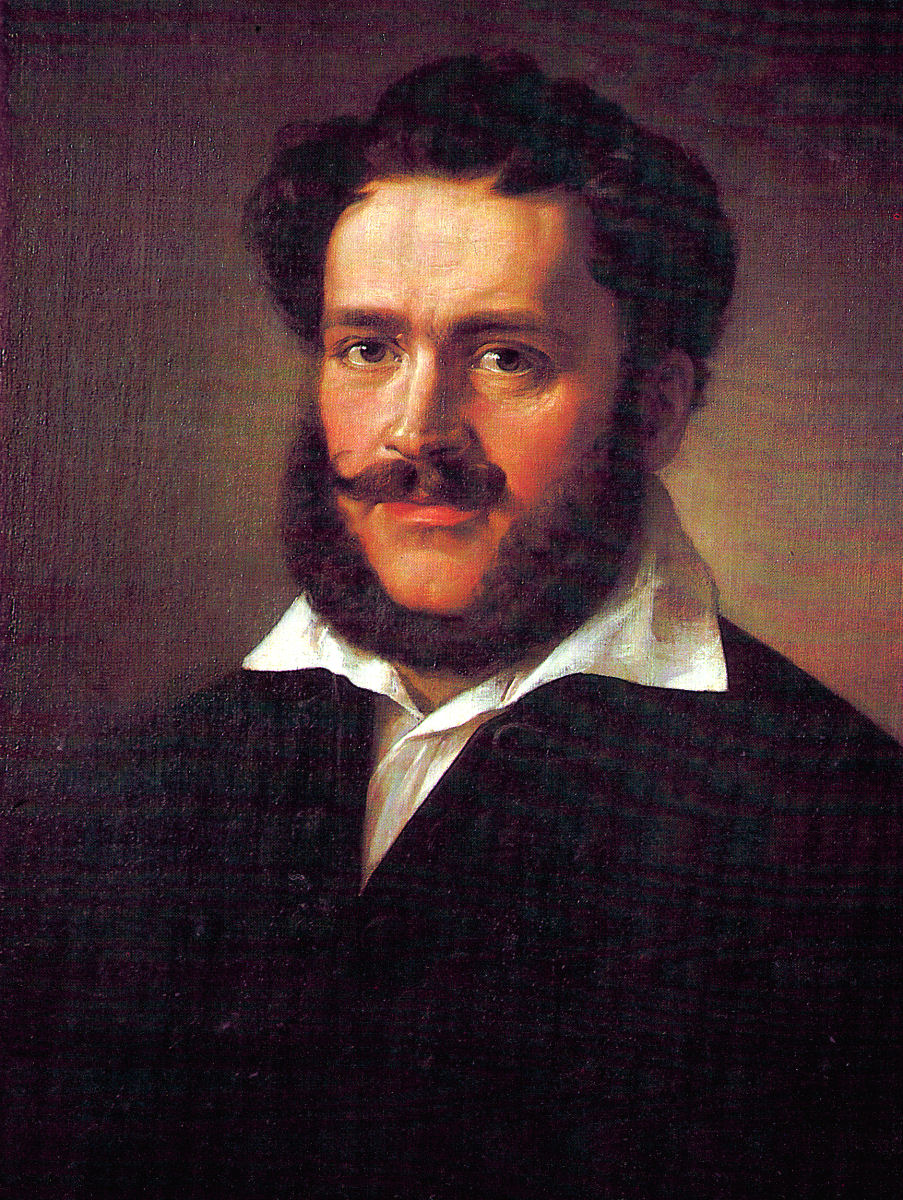
Miklós Wesselényi. Painting by Miklós Barabás, 1836.
Baron Miklós Wesselényi: The Appeal in the matter of Hungarian and Slavic nationality. Leipzig, 1843 – Jibou (Zsibó)
Baron Miklós Wesselényi: The Appeal in the matter of Hungarian and Slavic nationality. Leipzig, 1843 – Jibou (Zsibó) Fact of…
-
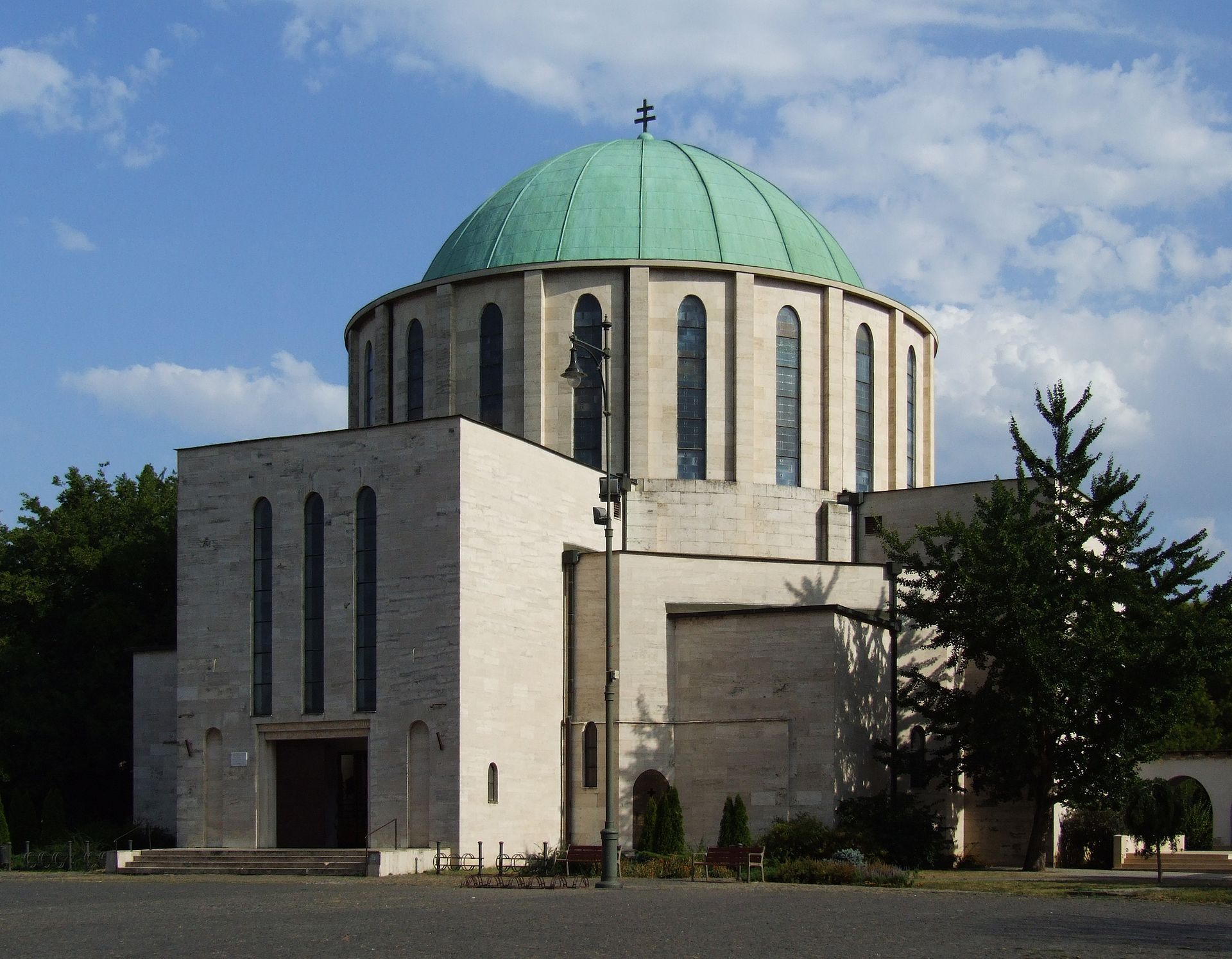
The Votive Church of Mohács, also known as the Church of the Annunciation, was constructed between 1926 and 1940 to commemorate the 400th anniversary of the Battle of Mohács. Designed by architects Aladár Árkay and his son Bertalan Árkay, it stands as Hungary’s first church with a reinforced concrete shell. The church features a 30-meter-high and 20-meter-wide dome, and its 1,227 square meter interior can accommodate up to 3,600 people. The stained glass windows, depicting saints in a style reminiscent of Gothic cathedrals, were created by Lili Árkayné Sztehló, Bertalan’s wife. The church was consecrated on August 29, 1940, and dedicated to the Virgin Mary, Patroness of Hungary.
Official Memorial Policy – Votive Church of Mohács
Official Memorial Policy – Votive Church of Mohács Fact of the Hungarian figure „The vast cemetery of our national greatness”…
-
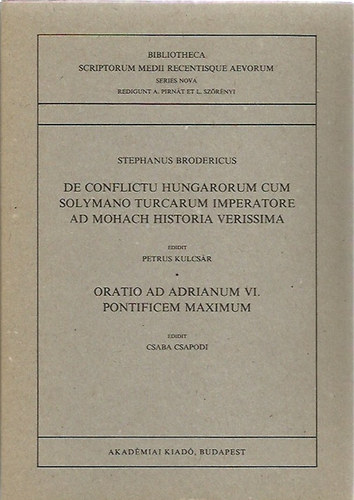
Mohach historia verissima… (1527, Kraków), the earliest known eyewitness account of the Battle of Mohács, was written for King Sigismund I of Poland. This Latin chronicle, first published by Mátyás Pyrser, provides a detailed narrative of the 1526 battle and its aftermath, including the death of King Louis II and the collapse of Hungary’s political leadership. The work was later incorporated into János Zsámboky’s edition of Bonfini’s Decades (1568) and reissued in Frankfurt in 1581.
The work of István Brodarics – Pécs
The work of István Brodarics – Pécs Fact of the Hungarian figure „The vast cemetery of our national greatness” –…
-
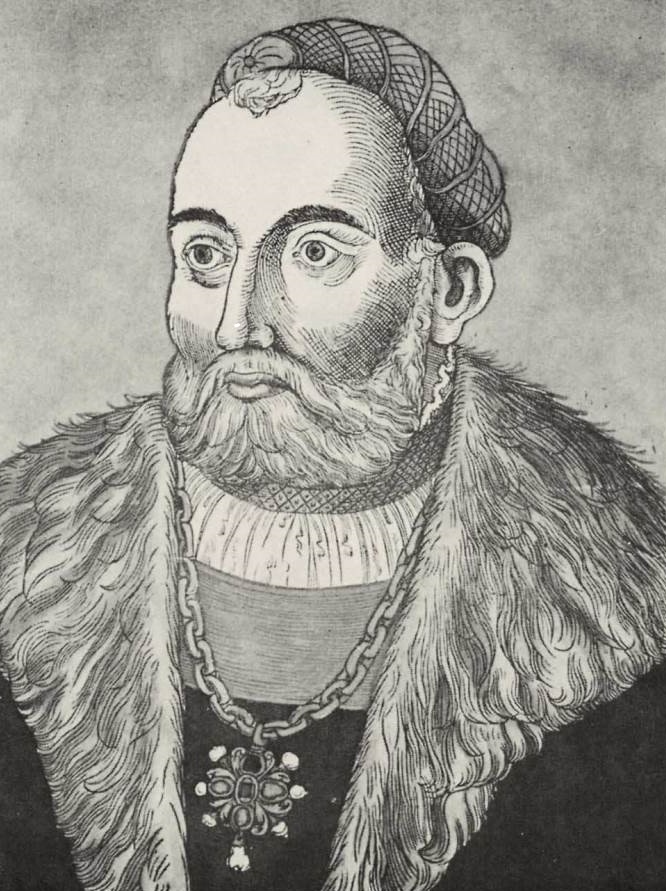
Erhard Schön: Authentic Woodcut Portrait of King John I of Hungary (Szapolyai János), 1526. This woodcut shows John Szapolyai, elected king after the catastrophic Battle of Mohács, which decimated Hungary’s political elite, leaving the state leaderless. Although Szapolyai’s coronation in Székesfehérvár was performed with the Holy Crown, his election lacked full legality as only the Palatine could convene a diet. Meanwhile, a rival assembly in Pozsony, lawfully convened by the Palatine, elected Habsburg Ferdinand as king, leading to a dual kingship and prolonged civil war in Hungary.
Legend of Szapolyai’s delay – Alba Iulia (Gyulafehérvár)
Legend of Szapolyai’s delay – Alba Iulia (Gyulafehérvár) Fact of the Hungarian figure „The vast cemetery of our national greatness”…
-
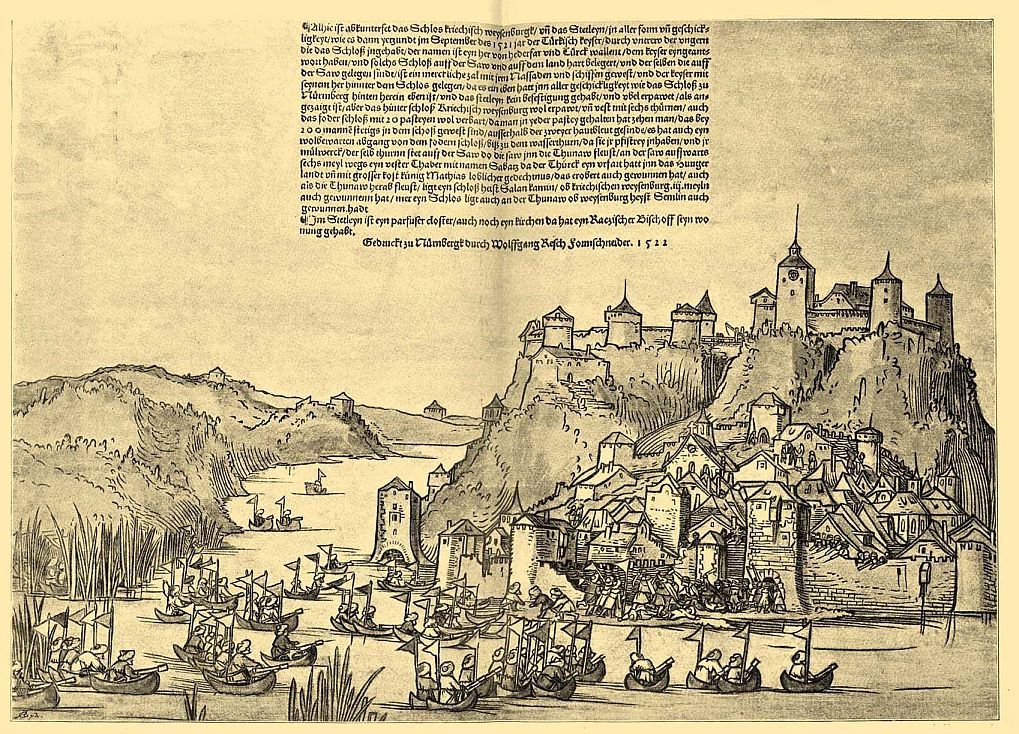
Wolfgang von Resch: The Siege of Belgrade (Nándorfehérvár) in 1521. This historical painting captures the pivotal moment when the Ottomans, under Sultan Suleiman the Magnificent, conquered Belgrade, marking a decisive step toward the collapse of medieval Hungary. Recent historical research by Norbert C. Tóth, Tamás Pálosfalvi, and Tibor Neumann emphasizes that the fall of the medieval Hungarian Kingdom was not simply due to Jagiellonian misrule, but to systemic structural limitations that even the great King Matthias’ reign could not permanently overcome.
Preludes to Mohács: Three Key Perspectives – Belgrade (Nándorfehérvár)
Preludes to Mohács: Three Key Perspectives – Belgrade (Nándorfehérvár) Fact of the Hungarian figure „The vast cemetery of our national…
-
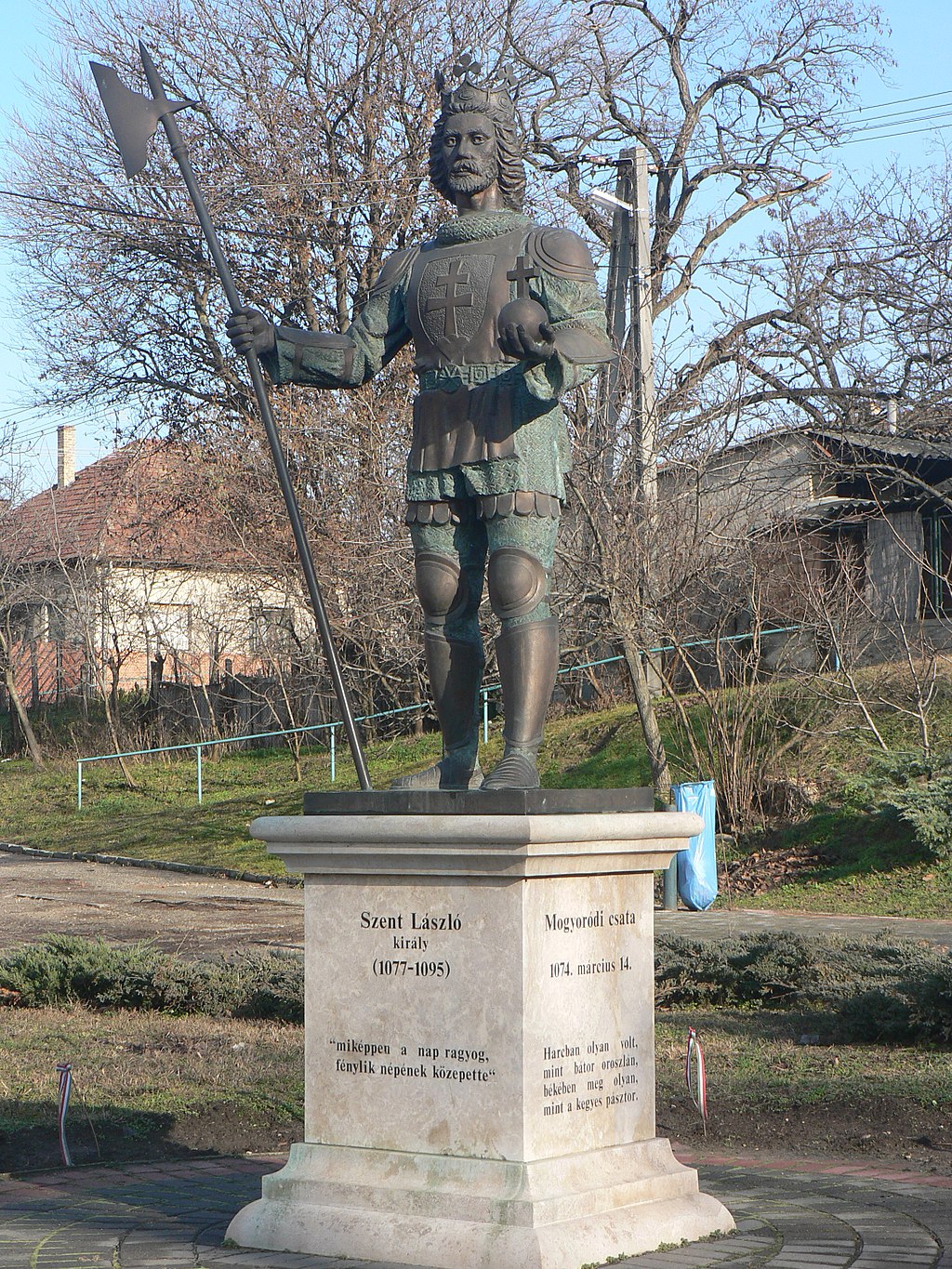
Bronze statue of Saint Ladislaus by Józsa Lajos, unveiled in 2001 on Mogyoród, commemorates the princes victory at the 1074 Battle of Mogyoród.
Saint Ladislaus – Oradea (Nagyvárad)
Saint Ladislaus – Oradea (Nagyvárad) Fact of the Hungarian figure „St. Stephen and others – First christian saints in Hungarian Kingdom”…
-
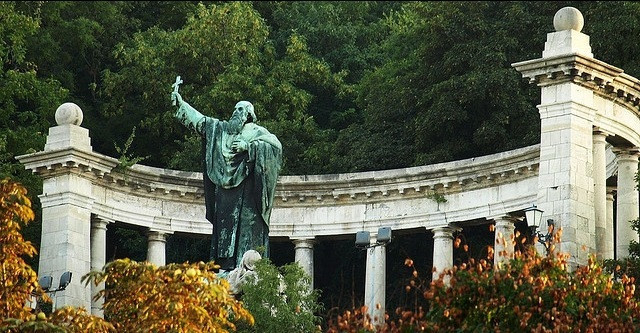
Erected in 1904, some 40 m up Budapest’s Gellért Hill, the memorial—centred on Gyula Jankovits’s 7 m-tall bronze of Saint Gerard lifting a cross, flanked by Aladár Gárdos’s stone figure of the recently converted warrior and framed by Imre Francsek’s semicircular arcade and waterfall—marks the traditional spot of the bishop’s martyrdom during the 1046 Vata pagan revolt.
Great pagan rebellion in 1046 – Gellért-Hill, Budapest
Great pagan rebellion in 1046 – Gellért-Hill, Budapest Fact of the Hungarian figure „St. Stephen and others – First christian saints…
-
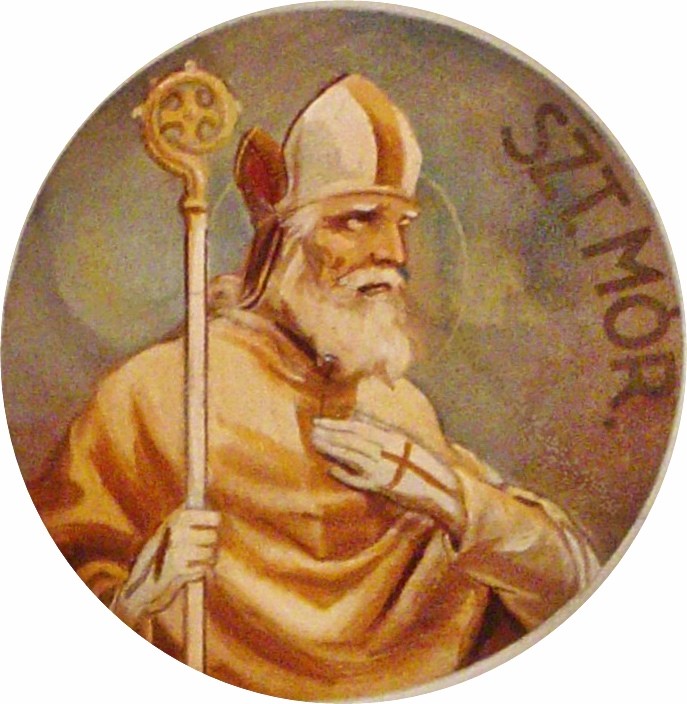
Ceiling fresco from the Pálos-Lyceum Church in Pécs, Hungary—one of the richly painted panels that form the church’s Baroque vault decoration.
Saint Maurus, the writer of the legend – Pécs
Saint Maurus, the writer of the legend – Pécs Fact of the Hungarian figure „St. Stephen and others – First christian…
-
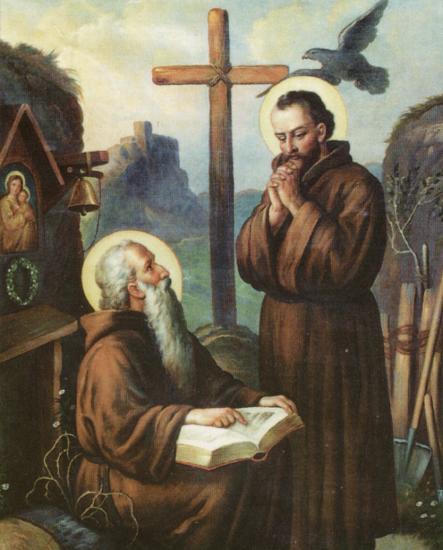
Devotional card showing Saint Andrew Zoerard (also known as Svorad or Świerad) alongside his disciple and fellow hermit-martyr, Saint Benedict (d. c. 1037).
Saint Andrew-Zorard and Benedict – Zobor
Saint Andrew-Zorard and Benedict – Zobor Fact of the Hungarian figure „St. Stephen and others – First christian saints in Hungarian…
-
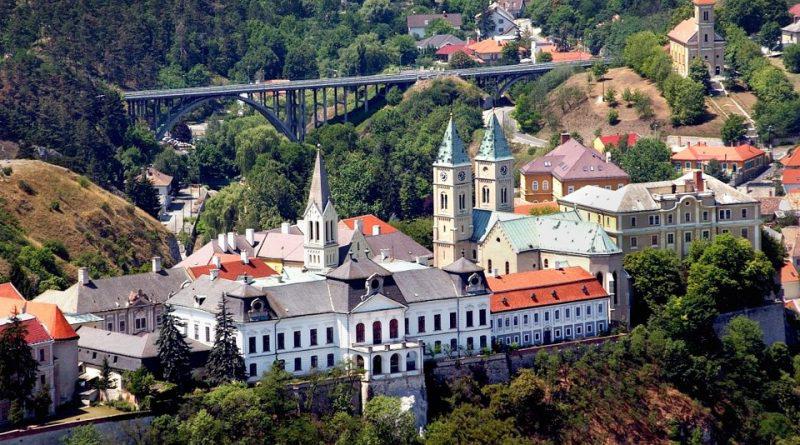
The designation of Veszprém—originating from Hungarian toponymy and derived from the West Slavic personal name Bezprem, meaning “stubborn ” or ” headstrong,” and traditionally associated with the Polish prince Bezprym, the son of King Bolesław I and Princess Judith of the Árpád dynasty—persists within the town, whose center is dominated by the partially dismantled Castle of Veszprém, a historic fortification esteemed today for its exceptional cultural and heritage significance.
First bishopric and the centre of Queens – Veszprém
First bishopric and the centre of Queens – Veszprém Fact of the Hungarian figure „St. Stephen and others – First christian…
